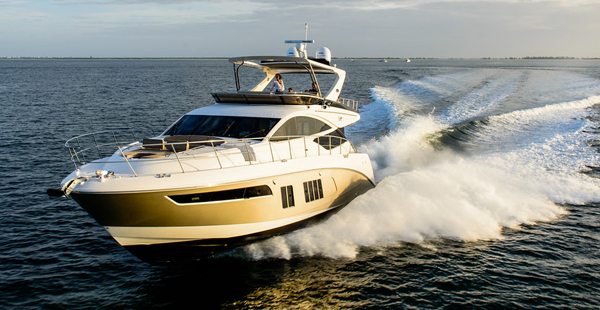YachtWorld releases Q1 2017 brokerage sales report

YachtWorld recently released its quarterly YachtWorld Market Index for the first quarter of 2017.
In the U.S., there were 5,709 brokerage boats sold in the first quarter, compared to 5,562 in 2016. These sales totaled $904 million, compared to $702 million the previous year’s first quarter.
All the gains were in powerboats, which make up 80 percent of the brokerage market, according to YachtWorld. Powerboat sales rose by 3 percent, with 4,676 boats sold, while sailboat sales of 1,033 boats were even with 2016.
Making strong gains were center consoles, power cruisers and saltwater fishing boats. Declining sales occurred among bowriders, sportfishing boats and cuddy cabins.
The largest gains were in powerboats between 26 and 35 feet, with 2,118 boats sold, up from 1,942. John Burhnam, managing editor of YachtWorld, said that when this category is growing, it’s a good sign for the more general boater.
“I believe that we’re starting to see some more boats in that 26- to 35-foot range available, boats that were built as we recovered from the most recent recession and are now four to six years old. I think there’s a little more good inventory on the market,” he said.
“You also have a wide variety of boats and prices ranges. And so as the economy starts to improve, you can see people who want to boat for different reasons starting to invest in boating, and it’s more of a broadly accepted and more broadly popular length category, versus when you get into the over 40 feet up to the superyacht category,” added Katy Judge, brand manager at Boats Group.
The average value of boats sold was $158,371 in the first quarter of 2017, up from $126,191 in the same quarter of 2016. A number of factors contributed to the increase, including expensive superyachts sold in Florida during the quarter, but YachtWorld reports it has seen the average price paid for boats increase in every segment the report tracks. Part of this is because the market has migrated to bigger boats over the past few years, and another factor is the age of the inventory.
The last recession is seven or eight years behind us, and at this point there are “more boats that were built in the years after the recession that are now three [to] six years old that are available, and those are the prime brokerage boats,” said Burnham. “Most people want to buy a boat that’s less than 10 years old, but they can get a good deal if they can buy one five to 10 years old. The problem has been that in that seven- to 10-year range right now, not many boats were built because that was during the recession. And now we’re starting to see more of the newer post-recession boats, and the value of those boats is higher than boats built in 2005.”
While average value is up, the average day to sale is down in all categories. In the first quarter of 2017, the average days to sale was 247, compared to 254 in 2016.
“That’s just saying the market is more fluid. Some of the older boats are no longer being traded on the brokerage market, or they’re no longer in circulation, and we have some newer boats available there. The demand is up,” said Burnham. “So if you combine an increase in average value and a reduction in average days to sale, it’s a sign that demand is up for the boats that are on the market.”
Judge added that as the way people buy and sell boats has changed with technological advancements over the past few years, the average day to sale has continued to decrease.
“Now you have services like YachtCloser where you can get a contract to somebody immediately and they can sign it with their phone and return it, you can send people messages through the MLS directly to their phone and text. Communication has just gotten a lot faster whereas other things were faxed or mailed in the past,” she said. “Brokers are getting way more into digital marketing and digital messages in working with our clients, and I think that contributes – even if it only saves people a few hours, it actually adds up to days when you take all of the transactions that have to go through for a sale.”
The YachtWorld quarterly report offers additional information on top brands overall and top brands by class, as well as insights on the United Kingdom and European markets.




